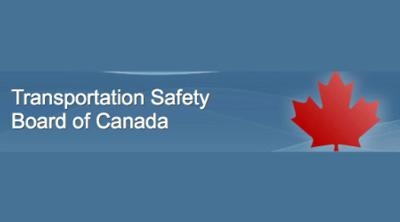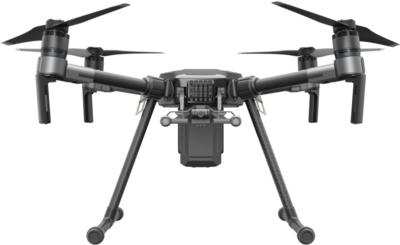Unseen Perils of the Final Approach Course
The Transportation Safety Board of Canada has released its final report (A21O0069) on the agency’s investigation of an August 2021 incident in which a police drone collided with a small, single-engine Cessna near the Toronto/Buttonville Municipal Airport (YKZ) in Greater Toronto.

On 10 August 2021, while on final approach under day VFR conditions to YKZ’s Runway 15, a Cessna 172N—registration C-GKWL, serial number 17268441—collided with a DJI Matrice M210 remotely piloted aircraft (RPA). The Cessna was operated by Canadian Flyers International Inc. and crewed by a student pilot and a certified flight instructor. The RPA was operated by the York Regional Police Department and under the control of a pilot and a visual observer stationed on the ground.
At approximately 13:01 EDT, the student pilot and flight instructor perceived a solid impact in the vicinity of the Cessna’s lower engine cowling. Suspecting a bird-strike, the pair continued the approach and made an uneventful landing, exiting the runway and proceeding to parking on the airport’s ramp. After securing the aircraft, they observed damage to the front left engine cowl beneath the 172’s propeller; however, no signs of bird-strike were evident.
Shortly thereafter, a member of the York Regional Police Department reported to YKZ airport staff that he believed a collision had occurred between the remotely piloted aircraft he had been operating and another aircraft. The RPA—a DJI Matrice M210 (registration C-2105569275)—had been in a stationary hover at 400-feet AGL when it and the Cessna collided. The RPA was destroyed.
Neither the Cessna’s occupants nor persons on the ground suffered injuries resultant of the incident.
The TSB investigation concluded that the Cessna pilots had been unaware of the presence of airborne RPA traffic in the vicinity of YKZ and, due to numerous factors, the active scanning technique integral to aviation’s see-and-avoid principle proved unsuccessful in identifying the conflict. The TSB further noted that York Regional Police policy does not require visual observers to be trained crew members; ergo, the RPA pilot did not brief the visual observer on the latter’s role and responsibilities prior to the operation’s commencement.

The TSB asserted the visual observer was neither aware of the requirement to maintain visual line-of-sight with the RPA, nor trained in visual scanning techniques or aircraft identification. Finally, the TSB set forth that the RPA pilot was contemporaneously tasked with operating the vehicle’s camera system, monitoring its flight status, and communicating on multiple radio channels. The TSB posited the preponderance of demands on his attention caused the RPA pilot to become task saturated, thereby restricting his ability to adequately monitor the RPA, hear radio calls on the control zone’s radio frequency, and identify the sound of incoming aircraft. The TSB concluded the conflict—owing to the RPA pilot’s diminished perception resultant of task saturation—went unrecognized, and the two aircraft collided.
The TSB reported that following the occurrence, the York Regional Police Department amended its directives to include the addition of a pre-flight risk assessment tool and an updated RPA pilot checklist. Additional guidance germane to the role of the visual observer was also developed and disseminated, including a quick reference card outlining the respective roles and responsibilities of the RPA pilot and the visual observer, as well as a requirement to have a visual observer present for all department RPA flights.
 Bolen Gives Congress a Rare Thumbs-Up
Bolen Gives Congress a Rare Thumbs-Up The SportPlane Resource Guide RETURNS!!!!
The SportPlane Resource Guide RETURNS!!!! Buying Sprees Continue: Textron eAviation Takes On Amazilia Aerospace
Buying Sprees Continue: Textron eAviation Takes On Amazilia Aerospace Hawker 4000 Bizjets Gain Nav System, Data Link STC
Hawker 4000 Bizjets Gain Nav System, Data Link STC Echodyne Gets BVLOS Waiver for AiRanger Aircraft
Echodyne Gets BVLOS Waiver for AiRanger Aircraft




